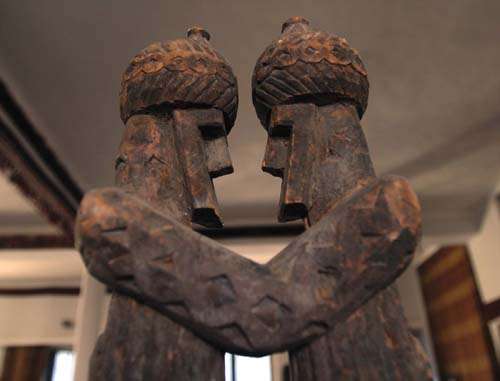Artifact: Idol Hour

Here is a pair of idols apparently acting out a forgotten pagan tale of Central Asia. Part of a collection housed in the Kabul Museum, the wooden statues were badly damaged in 2001 on the orders of the Taliban regime. At the same time that the giant Bamiyan Buddhas were destroyed, the contents of the museum were reduced to rubble. A weeklong orgy of destruction in the museum involved thousands of ancient artifacts. Some of these objects had long been in private collections but were returned to Afghanistan in the 1970s.
Ironically, the presence of the idols in Kabul was once perceived as serving Islam politically. The life-sized figures had a role in the traditional religion of eastern Afghanistan; following the forced conversion of that area in the 19th century, they were brought to Kabul as trophies of war and symbols of Islam's triumph. Taliban clerics, of course, saw them as an offense to Islam.
The West's view of the region's artifacts has changed as well. The Greco-Buddhist mix that marks Gandharan art used to interest only specialists; now it's hot. The Bamiyan Buddhas used to be dismissed as grotesque; now they're sorely missed.
These once-obscure idols were restored by the Austrian government. They went back on display in December.


Show Comments (1)